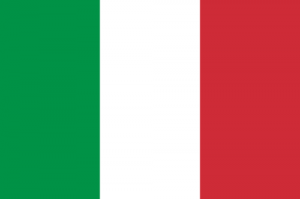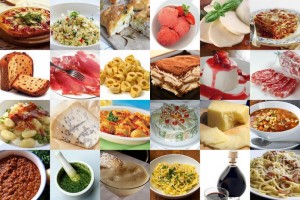 Italy Population 2013
Italy Population 2013
The population of the Italian Republic is estimated to be about 61.321 million people, which is an increase by about 0.99% from the last record of population. Up until around 1985-1986, the population of Italy remained greater than the population of France. However, now the population of Italy is greater than the population of Spain, but less than the population of France. Based on the total land area and the total population of the country, the population density is about 527.1 people per square mile.
Demographics of Italy
The population density, at over 200 persons per square kilometer (over 500/sq mi), is the fifth highest in the European Union. The highest density is in Northern Italy, as that one-third of the country contains almost half of the total population. The major ethnic group in the Italian Republic is the Native Italian group, which makes up about 96% of the population. There are also small populations of North African Arab, Italo-Albanian, Albanian, German, Austrian, and some other European groups. The official language of the country is Italian. There are a few dialects of the language spoken in the country and in some other places.
Religion in Italy
The major religion in the Italian Republic is Roman Catholicism. In fact, the Vatican City is in Italy, which is the center for Roman Catholicism and where the Pope, the head of the Roman Catholic Church, resides. There is also a very small amount of other Christian denominations, especially Jehovah’s Witnesses. However, the second largest religion in Italy is Islam. The majority of this Muslim population is immigrants or children of immigrants.
Most Italians believe in God, or a form of a spiritual life force. According to the most recent poll, 74% of Italian citizens responded that ‘they believe there is a God’, 16% answered that ‘they believe there is some sort of spirit or life force’ and 6% answered that ‘they do not believe there is any sort of spirit, God, or life force’. This makes Italians much more theist than those of most other European countries.
Sports in Italy
The most popular sport in the Italian Republic is soccer. In fact, the Italian soccer team won the World Cup in 2006. The team is known by the name Azzurri. Italian soccer teams have many interesting nicknames, often referencing historical facts, mascots, and geographical locations. One colorful tradition common to all, though, is to refer to the teams by the color of their soccer jerseys. The national team of Italy has won the most prestigious World Cup four times in 1934, 1938, 1982 and 2006 respectively. Italian football team is the current titleholder. The Italian national soccer team is popularly known by the name of Azzurri for their blue shirts. It is considered to be the second-most successful national football team in the world. Apart from this most of major Italian clubs get the opportunity to compete at a high level of soccer competitions.
The other major sports in Italy are water polo, skiing, and cycling. The Giro d’Italia (Tour of Italy), established in 1909, is a long-distance bicycle race that takes place annually in May or early June throughout Italy. The symbol of the Giro d’Italia is the Maglia Rosa, awarded to the overall leader after each stage of the race as well as to the eventual winner.
 Italian Cuisine
Italian Cuisine
Italian cuisine is extremely varied: the country of Italy was only unified in 1861, and its cuisines reflect the cultural variety of its regions and its diverse history (with culinary influences from Greek, Roman, Norman and Arab civilizations). Italian cuisine is imitated all over the world. To a certain extent, there is really no such thing as Italian cuisine in the way that one usually understands national cuisines. Each area has its own proud specialties, primarily at regional level, but also even at provincial level. Italian cuisine is not only highly regionalized, it is very seasonal. The high priority placed on the use of fresh, seasonal produce distinguishes the cuisine of Italy from the imitations available in most other countries. Italian dishes are known for its simplicity and the quality of the ingredients instead of the preparation. Some of the main ingredients are cheese, ham, and wine. Coffee is another large part of the Italian cuisine.
The richness of Italian cuisine lies in its diversity. From delicate tortellini filled with squash in Lombardy to spaghetti tossed with salted gray mullet roe in Sardinia, regional food preferences and cooking styles vary widely across Italy. Each recipe, each dish has its own history. Some recipes are thousands of years old and have changed very little over the course of time; others were born in the Renaissance or after the discovery of the New World, when a wealth of new foodstuffs like tomatoes, beans, peppers, zucchini, corn, and cocoa reached European shores; still others appeared in the last decade or so, novel elaborations on ancient themes.
Solutions for an Aging Population in Italy
Historical Population of Italy
The population of the Italian Republic has historically increased over the last half a century. However, there were some periods where the population remained almost equal from year to year. But, starting in the beginning of the 21st century, the population had been increasing at a greater rate.
| Year | Population (millions) |
| 1960 | 50.2 |
| 1965 | 52.11 |
| 1970 | 53.82 |
| 1975 | 55.44 |
| 1980 | 56.43 |
| 1985 | 56.59 |
| 1990 | 56.72 |
| 1995 | 56.84 |
| 2000 | 56.94 |
| 2005 | 58.61 |
| 2010 | 60.48 |
| 2011 | 60.72 |
Projected Population of Italy
The population of the Italian Republic is expected to begin to decrease over the next 37 years. The death rates will exceed the birth rates, along with a negative migration rate. The death rates will range from about 11 deaths per 1000 people to about 14 deaths per 1000 people. However, the birth rates will range from 9 births per 1000 people to 10 births per 1000 people.
| Year | Population | Percent Increase |
| 2015 | 60.889 | -0.71% |
| 2020 | 60.812 | -0.13% |
| 2025 | 60.652 | -0.26% |
| 2030 | 60.4 | -0.42% |
| 2035 | 60.148 | -0.42% |
| 2040 | 59.85 | -0.50% |
| 2045 | 59.395 | -0.93% |
| 2050 | 58.779 | -1.00% |


